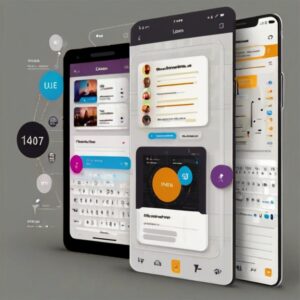Bespoke development stands out in today’s tech world. When we talk about bespoke, we refer to tailor-made solutions that fit specific needs.
The Intersection of Bespoke Development and UX
In a competitive market, users demand more than just functionality. They expect seamless interactions, intuitive design, and an overall positive experience while using a product. This is where UX comes into play. Bespoke development and UX are intertwined; you cannot craft a bespoke solution without considering the end user’s journey.
When you create a customized solution, the user’s needs, behaviors, and preferences become your primary focus. The goal is to design interactions that feel natural. It’s about making the complex simple and ensuring users get value effortlessly.
Understanding Your Users

The first step in enhancing user experience during bespoke development is to understand who your users are. This goes beyond demographics and looks into behaviors, pain points, and expectations. Engaging with the target audience through surveys, interviews, and focus groups can provide critical insights.
Creating detailed user personas helps visualize your audience. These are fictional characters drawn up from real data and they help developers and designers empathize with the user base. These personas include information like:
- Age
- Occupation
- Technical proficiency
- Goals and motivations
- Challenges and pain points
By referring to these personas, decisions can be made to cater to specific audience needs, ensuring a product that truly resonates with its users.
The Five Phases of Design Thinking
- Empathize
The first phase of the design thinking process is all about empathy. It involves immersing oneself in the users’ environment to fully grasp their experiences and emotional responses. This stage employs various qualitative research methods such as interviews, observations, and user diaries. By comprehending the users and their needs, we gather invaluable insights that guide the subsequent phases of development. Empathizing allows developers and designers to step into the users’ shoes, ensuring that the solutions address real pain points and genuinely enhance the user experience.
- Define
In this phase, the focus shifts to the precise articulation of the problem. The insights gathered from the empathize phase are synthesized to define the core issues. This step is crucial because a well-defined problem statement acts as a clear guide for the development process. It specifies the scope and objectives, setting a solid foundation for ideation. By accurately defining the problem, we ensure that the project direction remains laser-focused, avoiding scope creep and maintaining alignment with user needs.
- Ideate
Once the problem is clearly defined, the next step is to explore a multitude of possible solutions. Ideation is a creative and interactive phase where team members brainstorm a wide array of ideas without limiting their thinking. The aim here is to generate as many ideas as possible—ranging from the conventional to the wildly imaginative. This diversity in thought encourages innovation and increases the likelihood of discovering unique solutions. Techniques such as brainstorming sessions, mind mapping, and sketching are commonly employed to facilitate this process.
- Prototype
The ideate phase feeds directly into prototyping. Here, the most promising ideas are turned into tangible representations. Prototypes are scaled-down versions or models of potential products or features, created to explore and test ideas swiftly and efficiently. These can range from simple paper sketches to more functional digital mockups. Prototyping is about experimenting and learning, allowing teams to visualize and refine ideas before investing in full-scale development. It’s a critical phase for identifying potential pitfalls and improvement areas early on.
- Test
The final phase is testing, where prototypes are put in the hands of real users. This phase is essential for gaining authentic feedback on how the proposed solutions perform in real-world scenarios. User testing involves observing interactions, collecting feedback, and measuring satisfaction and usability. Testing validates the effectiveness of the prototypes and uncovers areas for enhancement. This phase is iterative, often looping back to previous stages based on the feedback received, ensuring continuous refinement and alignment with user expectations.
Through this iterative design thinking process, bespoke development becomes profoundly user-centric. Each phase builds on the previous one, ensuring that the final product is meticulously aligned with user needs and expectations. By allowing for continuous adjustments based on real user feedback, design thinking ensures that every development stage is informed by and responsive to end-user insights, ultimately leading to more effective, innovative, and satisfying user experiences.
User-Centered Design (UCD)
User-Centered Design (UCD) takes a similar approach, placing the user at the forefront of every decision made during the development process. It’s about involving users systematically throughout the design stages. This approach leads to more intuitive, efficient, and effective products.
Key Principles of UCD
- Focus on users and tasks: understand what users need to do and design with that in mind.
- Empirical measurement: test with real users to gather authentic feedback.
- Iterative design: constantly refine and improve your product based on user feedback.
- Integrated design: work collaboratively across different teams to ensure cohesiveness in design, functionality, and performance.